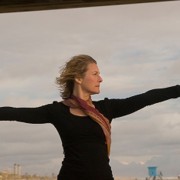Does the ability to be self-aware of our inner emotional world contribute to our mental health?
In March of last year, I explored alexithymia when reflecting on how this difficulty in identifying, describing, and feeling our emotional world may be a factor in post-traumatic stress disorder (PTSD), specifically how early childhood trauma impacts the developmental ability to integrate thinking and feeling. I find myself revisiting this topic again due to recent research that suggests alexithymia has a role in anxiety and depression in general, placing an even greater emphasis on the importance of the intelligence of our emotional experiences and the need to promote both self-awareness, and cultural acceptance of emotional expression as a way to improve mental health.
From my own personal experience growing up, I spent a great deal of energy navigating between the emotional overload of one parent (AKA chaos) and the emotional desert (AKA rigidity) of the other. Initially, rigidity was winning the battle as I did everything that I knew how to in order to suppress my emotions, including disassociating from them altogether and relying heavily on logical intelligence to figure life out. What rigidity taught me was how to be on my own, embracing the cultural value of independence and discounting the need for human connection (or is it the human need for connection?). What I came to understand many years later is that you cannot ignore your emotional world for long without severe consequences.
In holding on to my basic right to autonomy so tightly, I kept the door closed to connecting with others, viewing their emotional needs as monsters that would eat away at my independence. I used to say “I don’t need anyone. I may want you in my life, but I certainly don’t need you!” At that point, all I understood was that if I was not independent, I would be judged as co-dependent and needy, which was not acceptable and dangled rejection over my head. I didn’t know that neither end of the spectrum (from dependent to independent) was ideal for my overall health and well-being. When I started to learn that humans are part of a complex system that requires interdependence to thrive, I was able to start the journey towards wholeness, unlocking the doors that had been holding my intense, seemingly uncontrollable emotions out to be heard. The anxiety that I felt for most of my life was because I had rejected those parts of myself that I thought would make me unacceptable in the world. As I learned to listen to my emotions and the wisdom they had to offer, I was able to accept all parts of my human self and to open my heart to deeper connections with others.
The lessons of both my familial and societal cultures had impaired my emotional self-awareness and my sense of the emotional experiences of others and thus my ability to emotionally connect with others, creating a great deal of anxiety. With the support of a kind and patient therapist, I was able to allow myself to feel again, learn to reconnect with my emotions by giving them names, listen for understanding as to why those emotions arose, and, perhaps most importantly, that by allowing them to flow through me instead of denying them, learn to value them as much as my logical intelligence bringing more balance and compassion to my experience of the world.
So, how excited was I when I read this research that reflects how experiencing difficulties with identifying, describing and feeling emotions (alexithymia) explains the association between finding the healthy balance of interdependence (autonomy-connectedness) with anxiety and depression as it validated my personal journey. Prior to this research, evidence showed that the concept of autonomy-connectedness was related to anxiety and depression, yet little was known about the underlying causes. The results of this research offer guidance to mental health practitioners when supporting people experiencing anxiety and depression, specifically assessing, supporting, and increasing emotional awareness.
If you would like to read more on this research, click on the link below:






